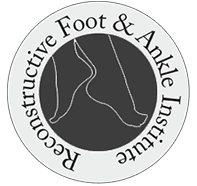Drop Foot
What is Drop Foot?
Drop foot is an aptly named condition in which you have little control over lifting the front of your foot. Drop foot isn’t a disease, but a condition in which you’re unable to lift your foot, which can lead to foot drag and an overcorrected gait to avoid dragging the top of your foot across the ground.
Drop foot may affect one or both of your feet, depending upon the cause, and is typically brought about by:
Nerve damage
This is the most common cause of drop foot, and it usually involves the peroneal nerve in your leg, which is responsible for lifting your foot. This nerve may be damaged during joint replacement surgery or because of prolonged squatting, which leads to problems controlling your foot. Drop foot can also come from a pinched nerve in your back.
Nerve or muscle disorders
Several disorders involving your nerves and muscles can cause drop foot, including muscular dystrophy, polio, or Charcot-Marie-Tooth disease.
Brain or spinal cord problems
There are a number of conditions that impact your brain or spinal cord in such a way that causes foot drop, such as multiple sclerosis or stroke.

Dr. Michaels Says:
“This makes it hard to walk and prevents you from lifting up your toes off the ground. Often, people fall with this as their toes catch on the ground when they walk. It usually does not get better but we can accommodate it with a unique ankle foot orthotic or ankle brace that fits in the shoe. We make the brace after molding your foot and ankle with a fiberglass sock. The casting process is really relaxing and is like a warm foot rub. When I cast my kids for the custom orthotics they love the process melt in the chair as it is so relaxing. It takes about a month for the brace to come back an unlike traditional braces, this one is lined with soft leather and is not really that big. Patients often come to me with large bulky ugly braces that are heavy and we get them our really good light brace and they love it. This is a natural approach to get you back to doing what you want to do without surgery or nasty drugs.”
Drop Foot Treatment Options

To start, Dr. Michaels assesses your drop foot using nerve conduction studies and advanced imaging to identify the source of the problem. Once he has a clearer picture of the issue, he uses different types of braces that normalize your gait and alleviate any associated pain while he treats the underlying problem. These braces fit into your shoe and help keep your foot lifted, restoring a more normal gait with less stress on your hips.
Dr. Michaels also recommends physical therapy to strengthen the surrounding muscles, which can help you regain a more regular gait while also warding off further progression of the condition.
Ultimately, the treatment for your drop foot depends entirely upon what’s causing the condition, but, rest assured, Dr. Michaels’ first order of business is improving the way you walk with braces so that you’re comfortable right away.
To learn more about your options when it comes to drop foot, call Reconstructive Foot & Ankle Institute or schedule an appointment using the online booking tool.

